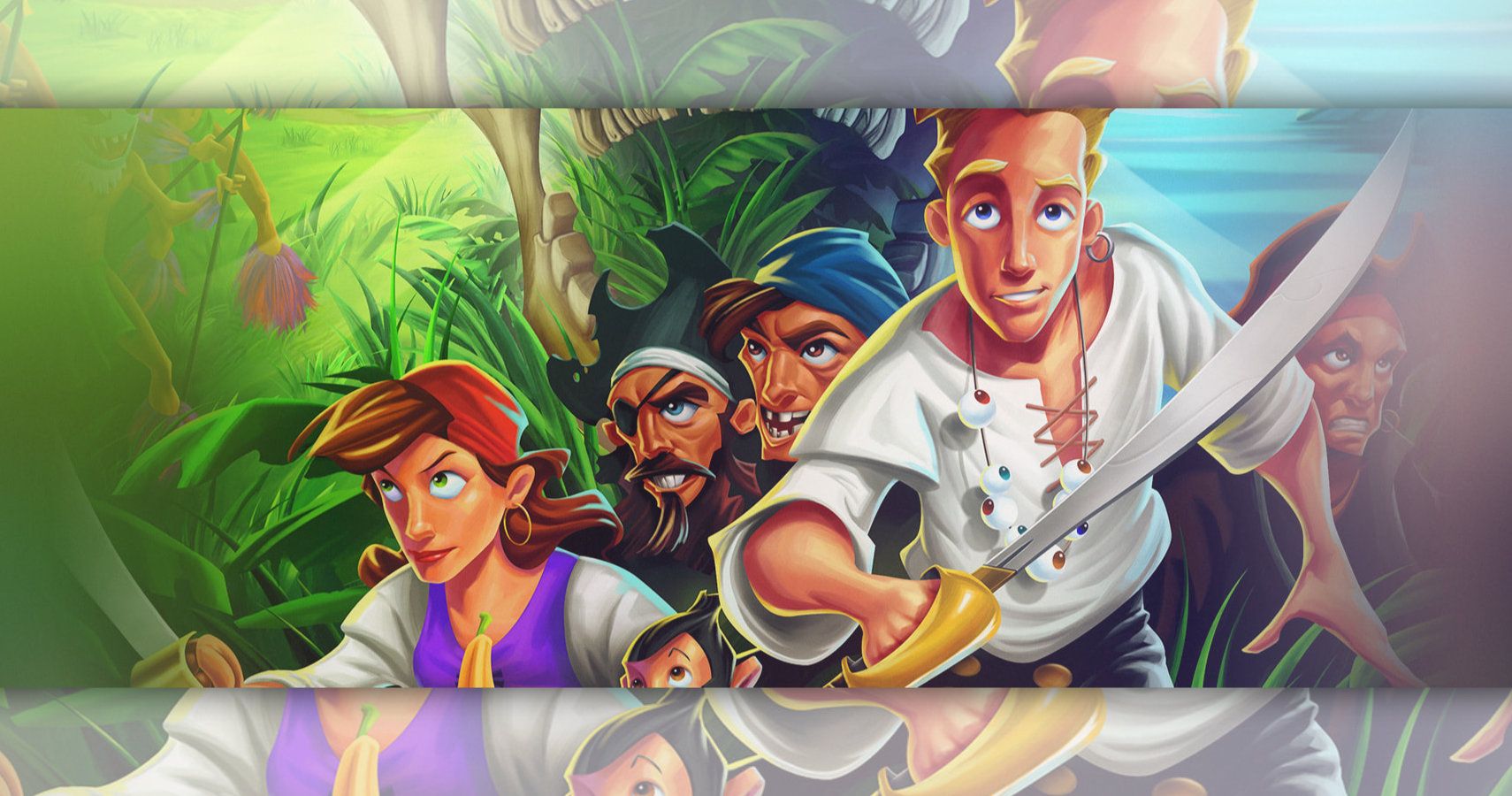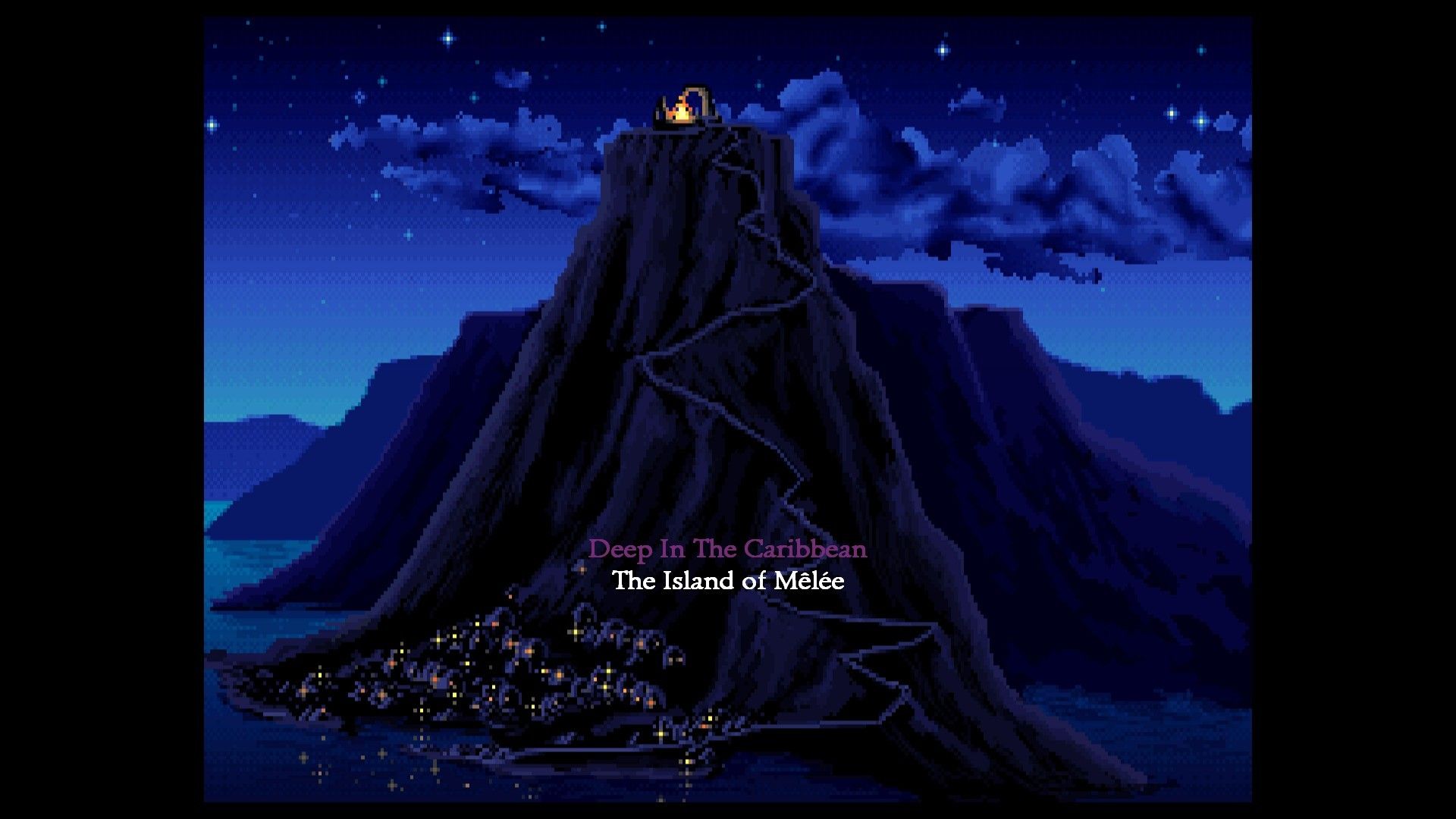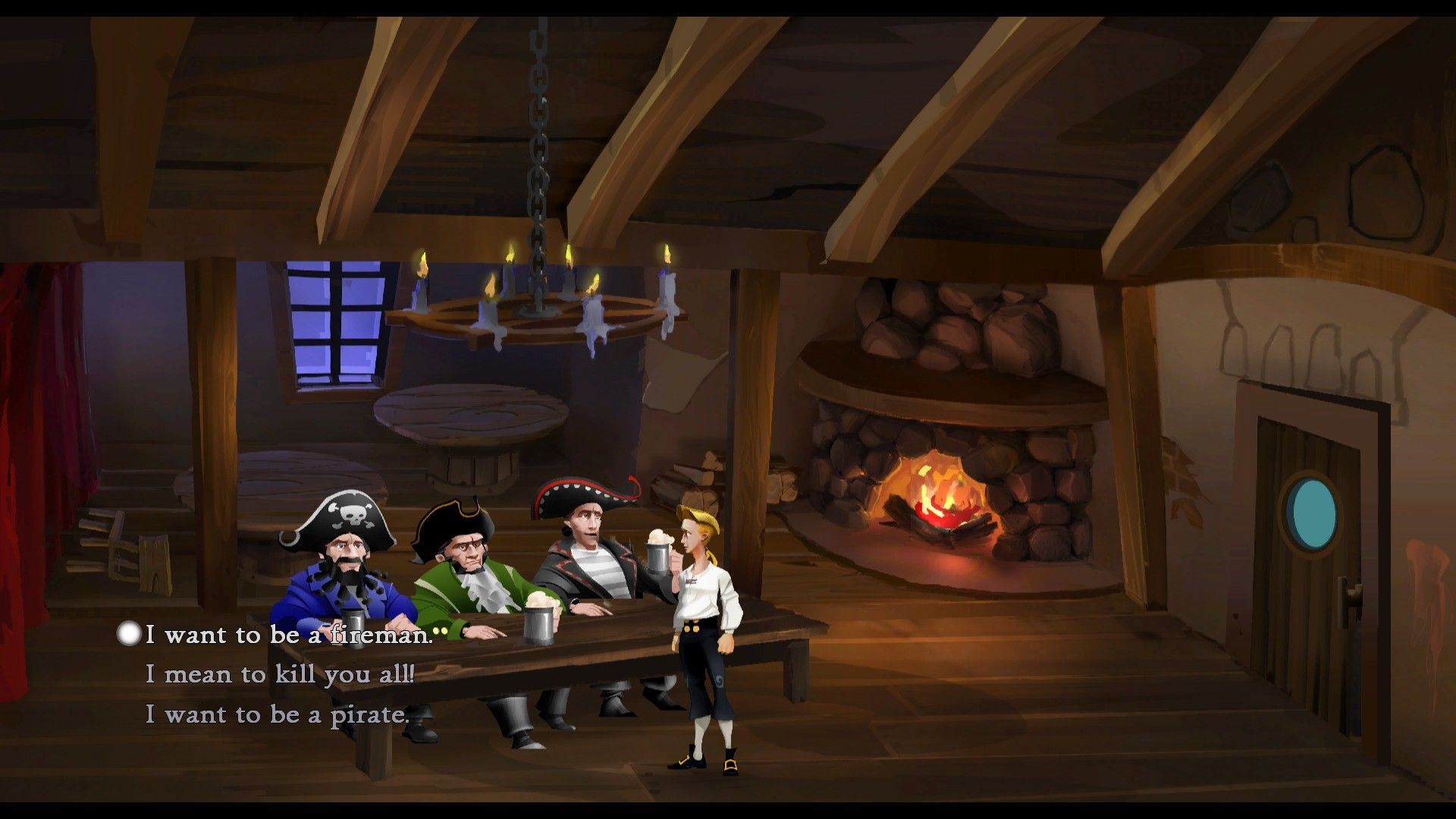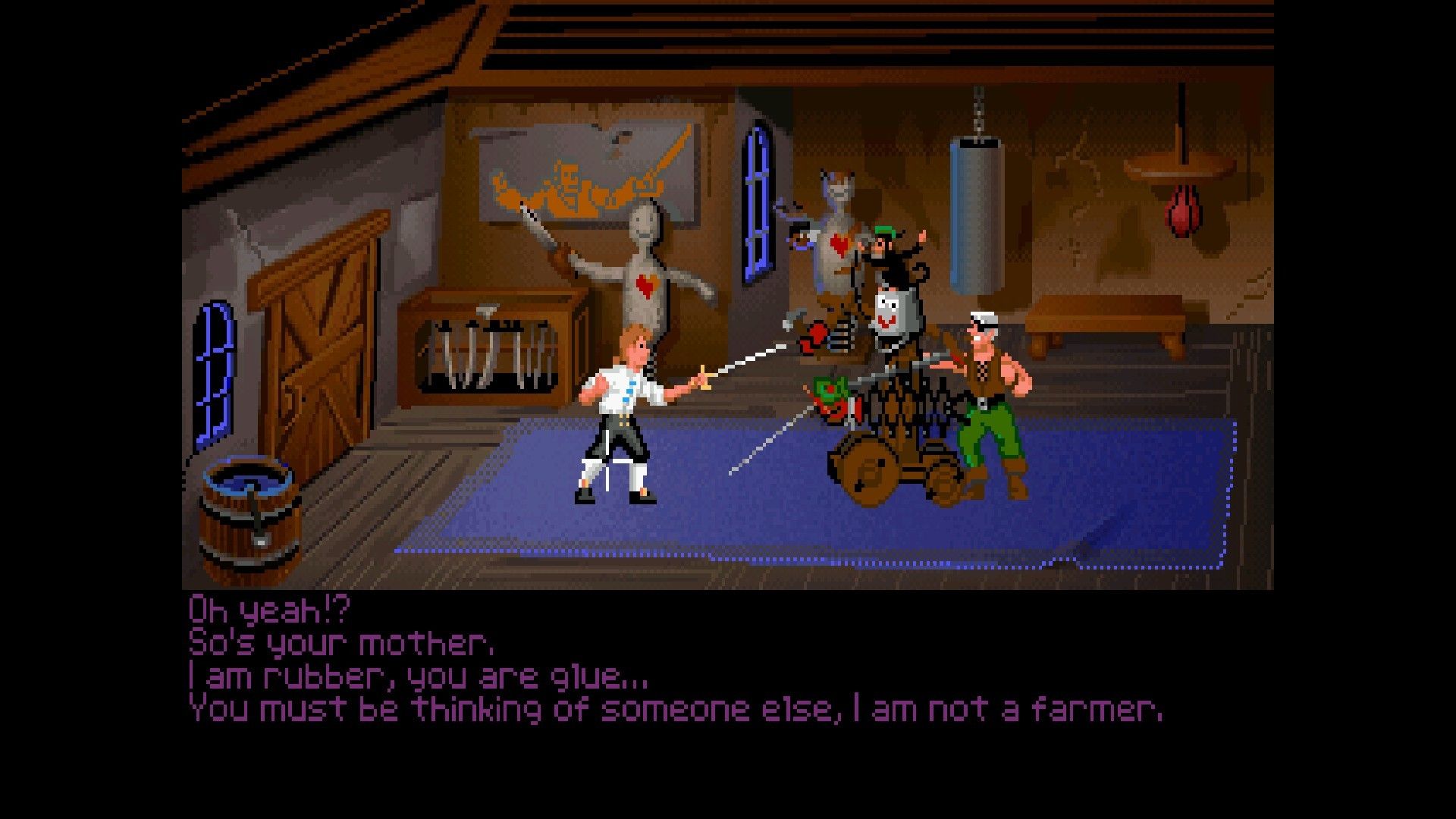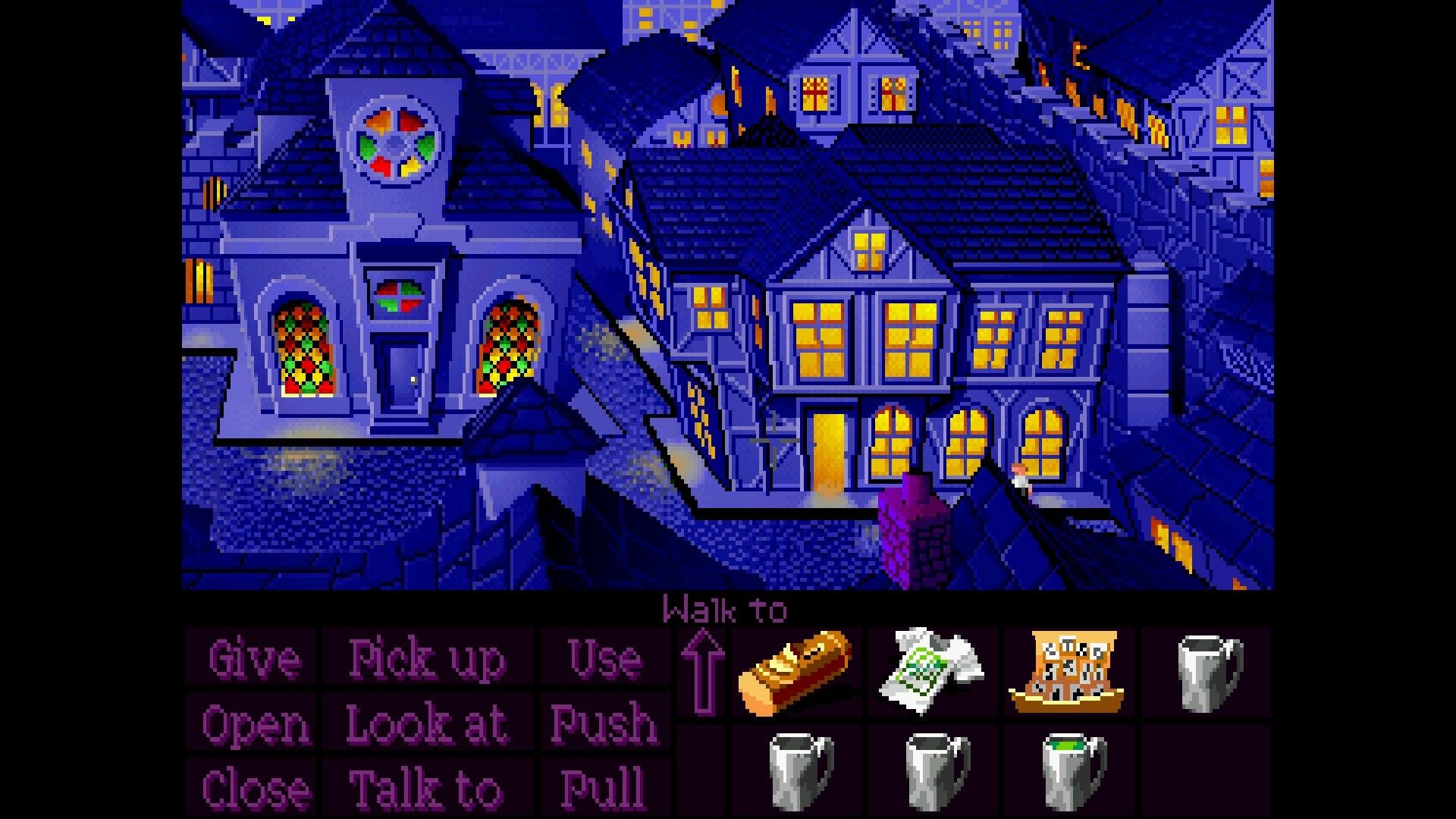It’s October 15th, 1990. George Michael was at number one in the US singles chart with Praying For Time, Apple released the Macintosh Classic, and Soviet President Mikhail Gorbachev is awarded the Nobel Peace Prize. It is also the day we are introduced to what will become one of the most influential games in video game history. Join me as we celebrate 30 years and take a journey down memory lane as we dive into retro-classic The Secret of Monkey Island.
Lucasfilm Games already had an established history of point and click adventures. The genre took their name from the action of moving your mouse pointer around the screen and clicking the button to interact with the various elements found within the game world. All this started when Lucasfilm Games developed Maniac Mansion and a piece of technology called SCUMM (Script Creation Utility for Maniac Mansion). SCUMM was later extended as subsequent titles required with The Secret of Monkey Island seeing the biggest changes. Without SCUMM, titles such as Sam & Max Hit The Road, Indiana Jones, and the Last Crusade, and the much-beloved Monkey Island series would not exist. SCUMM continued to be used officially until 1998 with the development of GrimE, a similar technology but with 3D graphics. Lucasfilm Games would later be renamed LucasArts.
The Secret of Monkey Island is an iconic game from the brain of Ron Gilbert and designed in collaboration with Tim Schafer and Dave Grossman, all of Lucasfilm Games. It was created over a weekend and drew influences from the Pirates of the Caribbean ride and the pirate adventure films of the black and white era. The game is a 2D adventure game viewed as if watching a movie and feature several cinematic cut scenes in between the acts. The protagonist is a pirate-wannabe known as Guybrush Threepwood, who has recently arrived on Mêlée Island. He is tasked with three challenges that need to be overcome in order to prove his worth and become the pirate he was meant to be.
If you have not had the fortune of playing The Secret of Monkey Island, where have you been? And boy, are you missing out! Monkey Island, as many refer to it, is a puzzle game with a cinematic flair that sees the player control the protagonist, Guybrush Threepwood. You have a considerable amount of free will and can wander around the island as you please, limited only by your progression and the scenes the game takes place over. The Secret of Monkey Island features many challenges and puzzles that must be solved before you can progress to the next clue. The art style is of its time, but it still conveys the distinct personalities that you will meet on your travels. Unlike most other games, it is virtually impossible to kill our hero, who ends up falling afoul of many comical mishaps rather than death. Even combat training is safe, with a participant’s swordsmanship relating to the impact of the insults they can sling, rather than any actual fighting ability. And who can forget Stan, the used boat salesman, who epitomizes car salesmen the world over and would stand on his head to get you a better deal! All of this goes some way to explaining the game’s unique sense of humor and why it is still loved as much today as it was then.
RELATED: Tetris 99 Is Bringing Back The Pokemon Sword & Shield Event To Promote The Crown Tundra
While The Secret of Monkey Island was a success, it didn’t live up to the hopes of Lucasfilm Games. It did enough to get a sequel with Monkey Island 2: LeChuck's Revenge in 1991, but it would be a further six years before the third game would hit the shelves in 1997. The Curse of Monkey Island continued the legacy with a new team and art direction, leaving behind the pixel art loved by many for an animated style found in cartoons. The final Monkey Island game, and fourth installment produced by LucasArts, Escape from Monkey Island, saw the move to 3D. Many fans felt this move lost something when compared to the prior releases and was now no longer a Monkey Island game. All was lost.
That is until 2009 when two milestones were hit. Telltale Games released an episodic adventure series, Tales of Monkey Island. This played out over five chapters and saw the return of fan favorites in an all-new adventure. We also saw the original Secret of Monkey Island revisited with the release of a Special Edition that contained the game with updated graphics and a special mode to switch between the original and reimagined versions. Monkey Island 2: LeChuck's Revenge saw the same treatment a year later.
The Secret of Monkey Island was not just a genre-defining game, but it left a lasting impact on the industry. The game inspired countless bedroom coders who have since become game designers, developers, artists, and sound techs for studios the world over. Many of those who worked on the originals moved on to pastures new and have climbed the ranks, overseeing teams, and sharing their knowledge and experience. Former employees of LucasArts founded the aforementioned Telltale Games, following its decision to stop producing adventure games. The Secret of Monkey Island has lived on for 30 years with releases on a wide variety of platforms outside of the common household PC. This included the Atari ST, Commodore Amiga, SEGA CD, and Apple Macintosh. It saw renewed success appearing on Android, iPhone, Xbox 360, and Playstation 3. It truly is a game that has spanned the decades and is still available to play today thanks to GOG and Steam. Few games can claim this accolade and it just goes to show how important Monkey Island, Guybrush Threepwood, and their legacy is.

